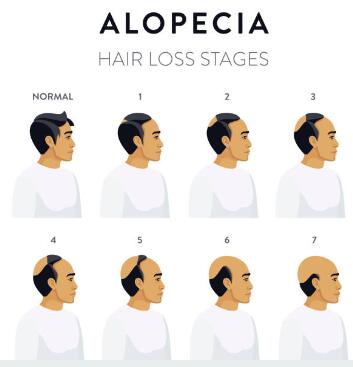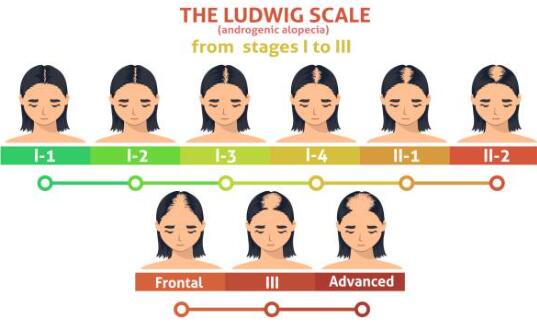Updated 2024 Chinese Clinical Practice Guidelines: Diagnosis and Treatment of Androgenetic Alopecia
Androgenetic alopecia (AGA) is a polygenic hereditary disorder and the most prevalent cause of non-scarring alopecia. Characterized by the progressive miniaturization of hair follicles, AGA transforms terminal hair into vellus hair.
AGA typically exhibits a patterned distribution: men often experience a receding frontal hairline and/or progressive thinning and reduction of hair on the crown, while women usually show diffuse thinning and fineness on the crown. A minority of men display the classic female-pattern AGA, and some women exhibit non-classical or male-pattern baldness. Clinically, AGA can be diagnosed based on the patient's history of progressive miniaturization of hair, distinct patterns of hair loss, and family history.
The etiology of AGA is multifaceted, with genetic factors and androgens playing crucial roles in the onset and progression of the disease. Despite normal androgen levels in the blood, individuals with a genetic predisposition have hair follicle cells that are highly responsive to androgens, leading to AGA. Evidence suggests that compared to non-balding follicles on the same scalp, balding follicles exhibit high expression of 5α-reductase and androgen receptors, with increased activity of type II 5α-reductase. Testosterone is metabolized by 5α-reductase in hair follicles to dihydrotestosterone (DHT), a metabolite with a stronger affinity for androgen receptors. Additionally, elevated androgen receptor levels in scalp follicles of AGA patients render them abnormally sensitive to circulating androgens. Activation of these receptors shortens the anagen phase of the hair growth cycle, increasing the number of telogen follicles. The progressively shortened anagen phase leads to follicular miniaturization, with follicles becoming thinner and shorter, eventually preventing hair from penetrating the epidermis.


AGA derives its name from its etiology and affects both men and women, resulting in various nomenclatures in English and Chinese, including androgenetic alopecia, androgenic alopecia, male-pattern baldness, seborrheic alopecia, early baldness, male and female pattern hair loss, and female-pattern hair loss. For consistency in diagnosis and treatment, this guideline will refer to this type of hair loss as "androgenetic alopecia (AGA)."
Target Population
This guideline is intended for male and female patients with AGA and is not applicable to those with AGA concurrent with other hair loss disorders.
Intended Users
The guideline is designed for clinical physicians, nursing staff, technicians, and relevant teaching and research personnel involved in hair disease management at all levels of hospitals. This includes departments such as dermatology, medical cosmetology, plastic surgery, obstetrics and gynecology, endocrinology, pathology, psychiatry, basic research centers, and scientific teaching teams.
